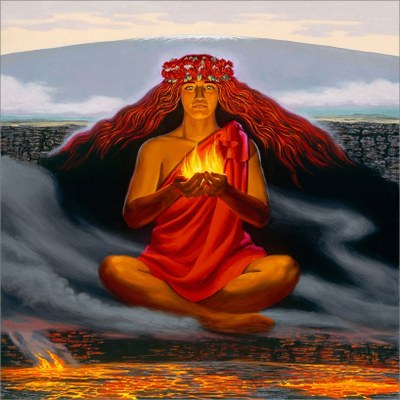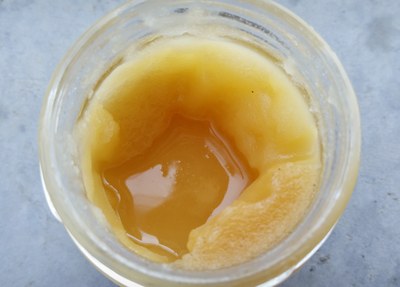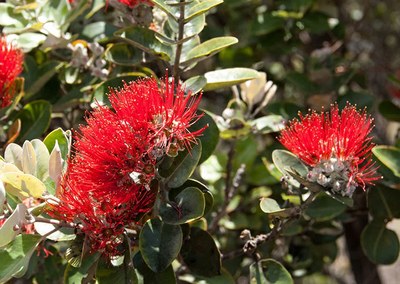 |
|
|---|---|
|
Title: Pele Honua Mea (Pele of the Sacred Earth)
Artist: Herb Kawainui Kane
Location: Jaggar Museum; Hawaii Volcanoes National Park
|
Lehua Blossom from Hawaii, USA
Photo the National Park Service |
When we think of the Hawaiian Islands, we think of soft warm breezes, watching the sun turn red as it dips into the ocean, swimming with sea turtles and colorful fish, gazing at impossibly thin waterfalls cascading down the mountainsides and seeing volcanoes reaching up into the sky.
Now, imagine a honey that can bring these thoughts to reality. Lehua Blossom Honey – rich, thick, creamy, complex – gives our senses all the islands have to offer.
The Lehua Blossom, known as Pele’s flower is a fluffy red pouf adorning the tops of the Ohia Tree. Acording to Hawaiian legend, Ohi’a and Lehua were lovers. The Volcano Goddess Pele desired Ohi’a, but her advances were rejected. In a jealous fit, the fiery tempered Pele turned Ohi’a into a twisted and ugly tree. Lehua was heartbroken. She pleaded with the other gods to take pity on her. Lehua was turned into a flower, which they placed on the Ohi’a tree forever uniting the two lovers. Should you pick the Lehua flower from the Ohi’a tree, rain will come down, signifying the tears of the separated lovers.
Most Lehua honey comes from the Ka’u District of the Big Island. It is gathered in the cooler north highlands where the Ohi’a is often the first tree to grown on new lava flows. It is naturally creamy and a soft yellow white color. The aroma is a magical mixture of woodlands and earthiness. The flavor is complex. A bit of butterscotch, pure creamery butter and brown sugar. It is exotic and not overwhelmingly sweet. It’s perfect in coffee where the complex flavors of the coffee meld with the unusual character of the Lehua.
 |
Lehua Honey Thick, creamy, savory, and complex
Photo (c) Honey and Pollination Center, UC Davis |
From the Hawaii Volcanoes National Park Brochure:
In recent years, the Ohi’a Tree has been disappearing. Rapid ʻŌhiʻa Death (ROD) is newly identified fungal disease currently attacking and killing ʻōhiʻa on Hawaiʻi Island. This fungus clogs the tree's vascular system, depriving the canopy of water, and may kill ʻōhiʻa very quickly. ʻŌhiʻa is the keystone species in Hawaiian forests, and ROD has the potential to cause major ecosystem disturbances that will negatively impact watersheds, cultural traditions, natural resources, and quality of life.
Infected ‘ōhi‘a trees may have individual branches or entire canopies of recently dead and still attached brown leaves. The tree's sapwood may have dark and unusual staining and a fruity odor, though signs of the fungus may not be visible on the outside of the tree. Additional testing is needed to confirm ROD, since ‘ōhi‘a may also die from other diseases, drought and injury.

